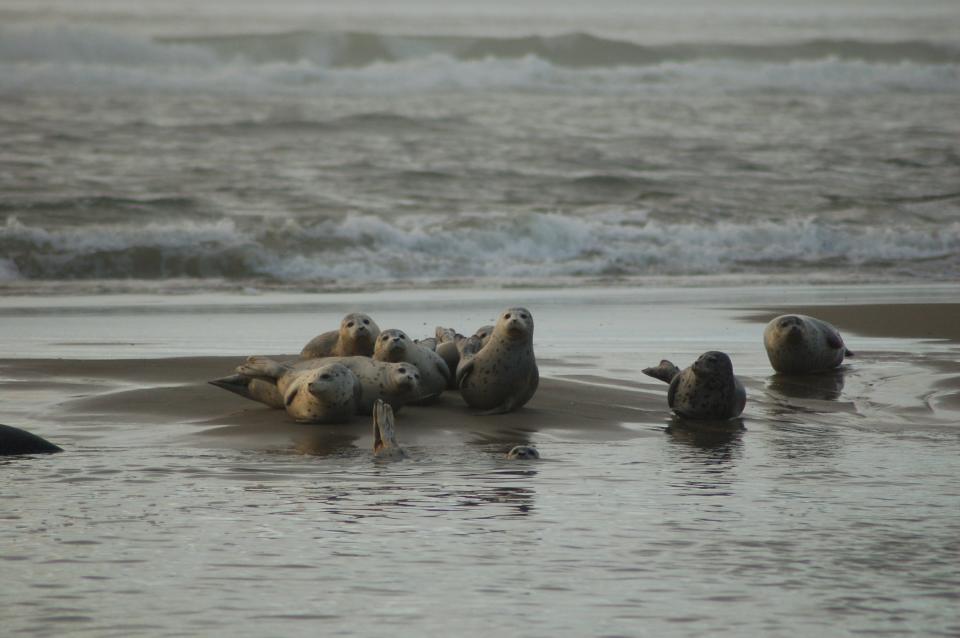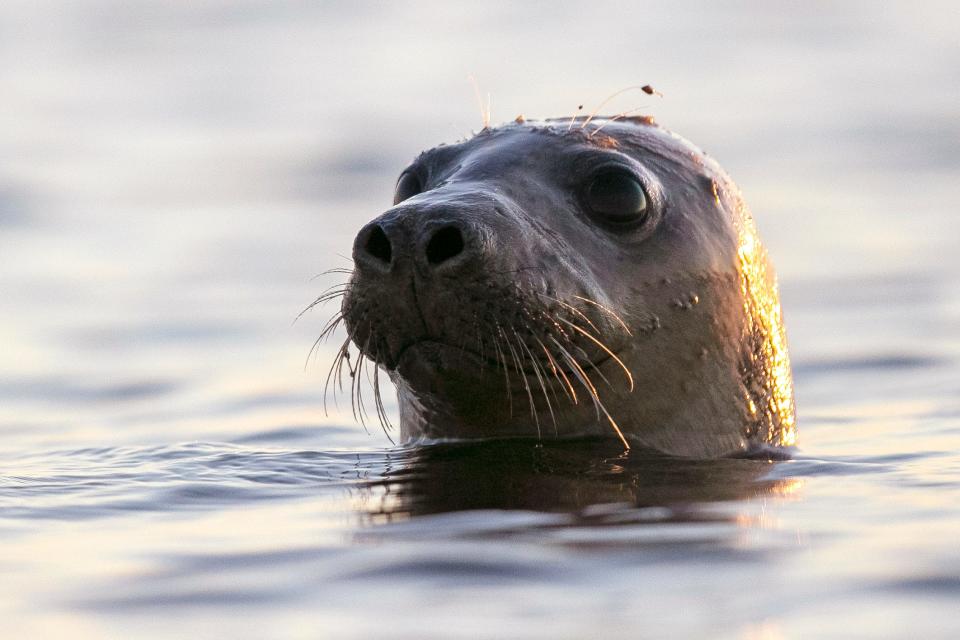Harbor seals a plenty in the Gulf of Maine: Great for tourists, not the ecosystem
Harbor seals have been in the news lately; they are the iconic loveable mammals of our seaside.
Harbor seals and all marine mammals were protected when the Marine Mammal Protection Act was passed by Congress on October 21, 1972. This ended all hunting of marine mammals.
Until the 1960s, there were bounties paid for harbor seal hides to protect the fisheries in some New England states. The number of harbor seals had decreased, and the numbers have steadily increased since the protection began.

Harbor seals are a true seal weighing in at 180 to 285 pounds. They average between 5 to 6 feet in length.
These seals have a fused pelvic bone which does not allow them to stand on their hind legs like sea lions. Instead, they snake and waddle their way across land.
Unlike sea lions, they have no voice or external ears.
Harbor seals feed on fish and shellfish around 20 pounds a day and can sleep underwater for up to 30 minutes. They reach maturity between 3 to 7 years of age and live to 25. Calving occurs in May and June here in the Gulf of Maine and the pups are weaned in three to four weeks. They are the most common and recognizable marine mammals in New England and the U.S.
More: Great white shark sightings spike off Gulf of Maine coast: Here’s why
In the past decade, the number of harbor seals has increased to the point that they are now seen everywhere in the Gulf of Maine. Instead of only being visible in the harbors during the winter months, they can be viewed any time of the year. Great for the tourists, not so great for the ecosystem.
I’d like to compare the numbers of harbor seals with the increase in white-tailed deer in New England over the past several decades. People began to outlaw hunting within towns and counties and the number of hunters decreased. The numbers of white-tailed deer steadily increased to the point where they were grazing in people’s back yards decimating gardens. They were also eating down the shrubbery in the forests and the squirrels, chipmunks and other mammals were unable to find food during the winter. The deer began to die of starvation.
Moon snails: The unique creature that eats other snails and clams
Along with the malnutrition, the deer began to pass on tick-borne disease. Lyme became a common ailment passed on through the deer ticks to chipmunks and white-footed mice to humans. Overpopulation of a species often causes starvation, disease and suffering.
There is a point where the ecosystem reaches its carrying capacity and overpopulation occurs setting off a myriad of unwanted consequences. As humans, we do not always realize soon enough when this happens, mainly because we have spent years humanizing these wild animals and forgetting that they are wild animals. Sometimes nature does have to take its course.
Decorator crabs: The amazing spider crustaceans found in Hampton Beach tidepools
Now let’s look at the harbor seal population; they have had many successful calving seasons. The number of seals is undoubtedly at or above the carrying capacity of our ecosystem.
They have been skirting close to overpopulation for decades. Last week, the National Oceanographic and Atmospheric Administration made an official declaration of an “Unusual Mortality Event” in southern to mid-coast Maine from a threefold increase of seal strandings and deaths. Between June 1st and July 19, 2022, there have been 159 harbor and gray seal deaths. According to the USDA, there have been four seals that tested positive for (HAPAI) H5N1 (avian flu). They have notified the Centers for Disease Control and Prevention. According to NOAA, “H5N1 is a 'zoonotic disease' that has the potential to spread between animals and people (and their pets).” Also, according to NOAA, most of the seals that have been stranded in Maine this summer were found dead.

There has been an ongoing avian flu outbreak throughout New England and many birds have died or had to be euthanized due to exposure to this virus.
The spread to seals is concerning as it has jumped the species barrier. According to the experts, the disease does not seem to be spreading from mammal to mammal. It appears to be spreading from the birds to the seals. This is a better scenario than if it were spreading between mammals as this would be a direct threat to human health.
More: Dead and sick birds found on Goose Rocks Beach in Kennebunkport. What's the cause?
How to report dead or stranded seals
To report marine mammal strandings, NOAA advises that you call the local Marine Stranding Network or the NOAA Fisheries Stranding hotline at (866)755-6622. Do not approach a dead or stranded seal; keep your pets leashed and remain at least 150 feet away from the seal for both your safety and that of the animals. Never touch a dead or sick seal.
Please never approach a sick or stranded marine mammal. Treat them as you would a sick raccoon or fox. Call the stranding network and let them take care of the situation. We think of harbor seals as cute and cuddly, but they are wild animals and should be respected and treated as such.
Ellen Goethel is a marine biologist and the owner of Explore the Ocean World at 367 Ocean Blvd. at Hampton Beach.
This article originally appeared on Portsmouth Herald: Harbor seals a plenty in the Gulf of Maine: Here's why it's a problem

